Algorithm CH6 Heap sort
Algorithm CH6 Heapsort
Heap A is a nearly complete binary tree.
- Height of node = # of edges on a longest simple path from the node down to a leaf.
- Height of heap = height of root =
(lg n)
A heap can be stores as an array A
- Root of trees is A[1]
- Parent of A[i] = A[
] - Left child of A[i] = A[2i]
- Right child of A[i] = A[2i + 1]
- Computing is fast with binary representation implementation
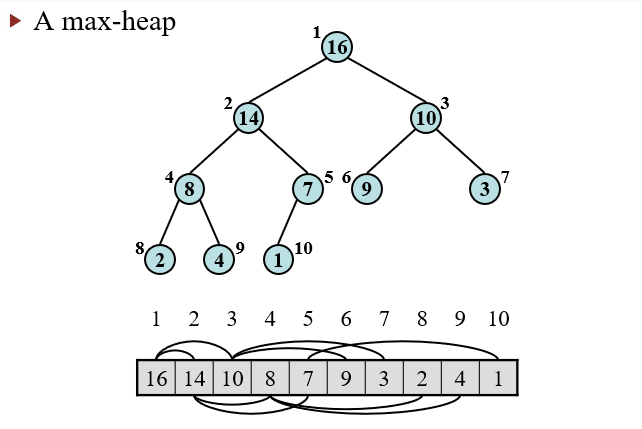
Heap property
- For max-heap (largest element at root), max-heap property: for all nodes i, excluding the root, A[PARENT(i)]
A[i]. - For min-heap (smallest element at root), min-heap property: for all nodes i, excluding the root, A[PARENT(i)]
A[i].
Maximum element of a max-heap is at the root.
The heapsort algorithm we’ll use max-heaps.
build heap
MAX-HEAPIFY
MAX-HEAPIFY is important for manipulating max-heaps. It is used to maintain the max-heap property.
- Before MAX-HEAPIFY, A[i] may be smaller than its children.
- Assume left and right subtrees of i are max-heaps.
- After MAX-HEAPIFY, subtree rooted at i is a max-heap.
pseudo code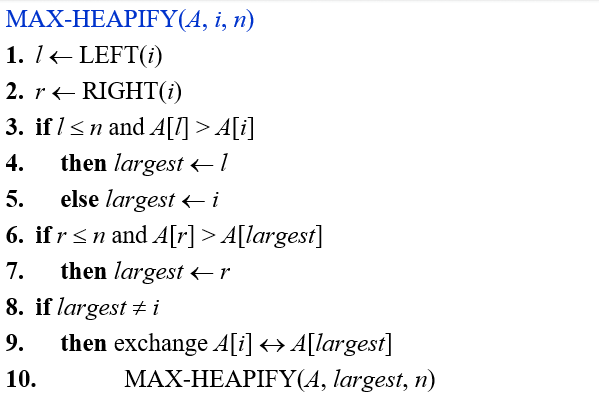
ex.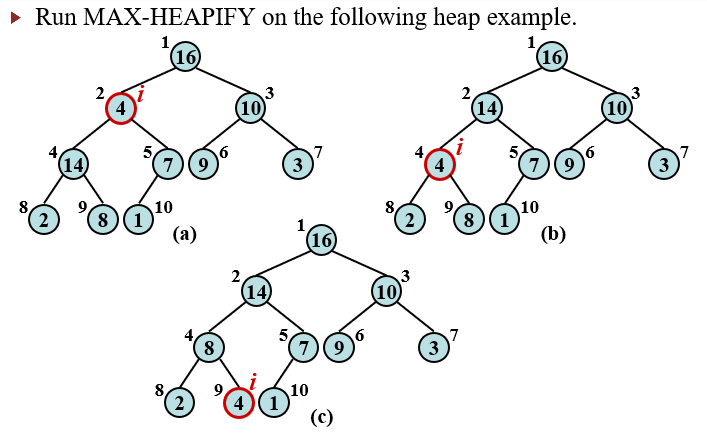
analyse
Time: O(lg n)
Correctness: Heap is almost-complete binary tree, hence must process O(lg n) levels, with constant work at each level (comparing 3 items and maybe swapping 2).
BUILD MAX HEAP

correctness
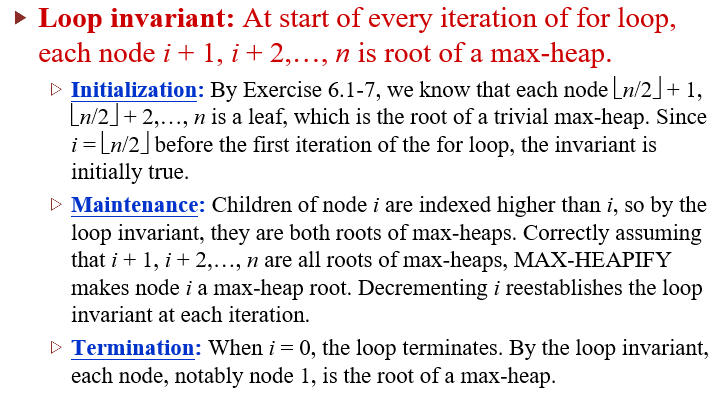
analyse for build max heap
- 生成函數微分後,乘上x (A.8)
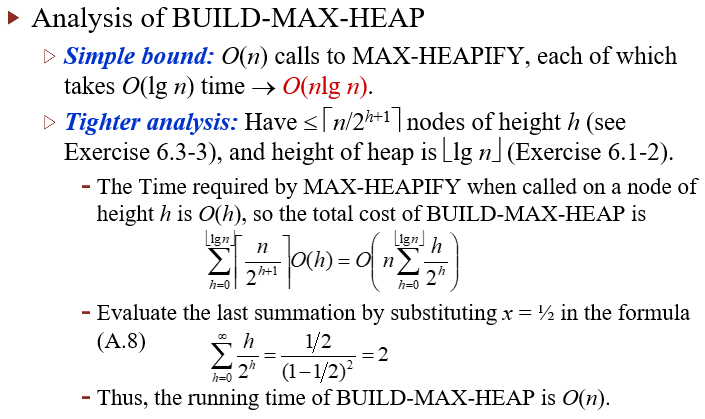
heap sort

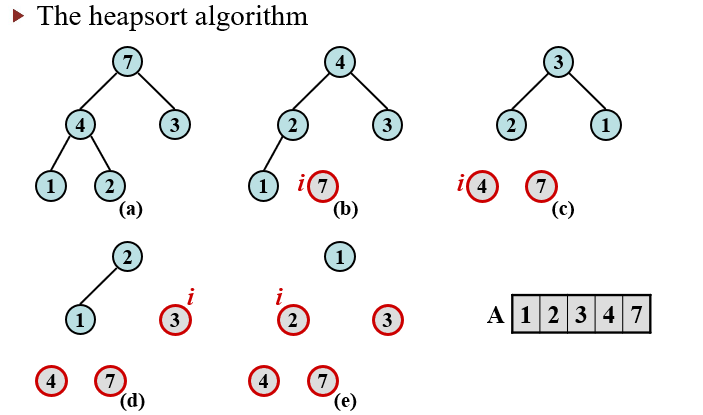
analyse
Analysis of heapsort
- BUILD-MAX-HEAP: O(n)
- for loop: n – 1 times
- Exchange elements: O(1)
- MAX-HEAPIFY: O(lg n)
- Total time: O(nlg n)
Though heapsort is a great algorithm, a well-implemented quicksort usually beats it in practice.
priority queue
Heap implementation of priority queue
- Max-priority queues are implemented with max-heaps. Min-priority queues are implemented with min-heaps similarly.
Max Priority Queues
- Maintains a dynamic set of S of elements.
- Each set element has a key: an associated value.
- Max-priority queue supports dynamic-set operations:
- INSERT(S, x): inserts element x into set S.
- MAXIMUM(S): returns elements of S with largest key.
- EXTRACT-MAX(S): removes and returns element of S with largest key.
- INCREASE-KEY(S, x, k): increases value of element x’s key to k. Assume k
x’s current key value.
Finding the maximum element
- Getting the maximum element is easy: it’s the root.
- HEAP-MAXIMUM(A)
- return A[1]
- Time:
(1)
Extracting max element
- Given the array A:
- Make sure heap is not empty
- Make a copy of the maximum element (the root).
- Make the last node in the tree the new root.
- Re-heapify the heap, with one fewer node.
- Return the copy of the maximum element.
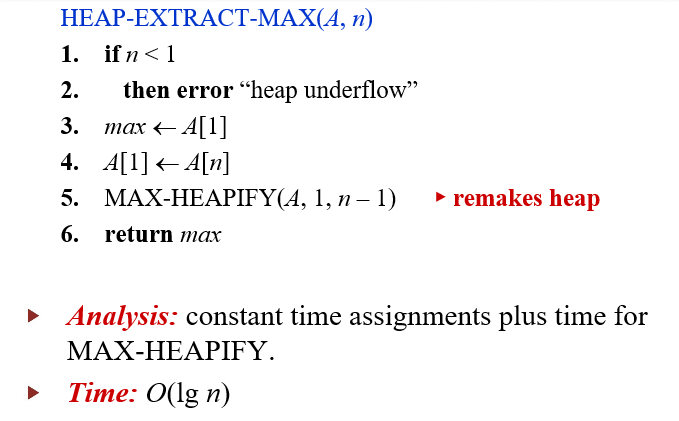
Increasing key value
Given set S, element x and new key value k:
- Make sure k
x’s current key. - Update x’s key value to k.
- Traverse the tree upward comparing x to its parent and swapping keys if necessary, until x’s key in smaller than parent’s key.
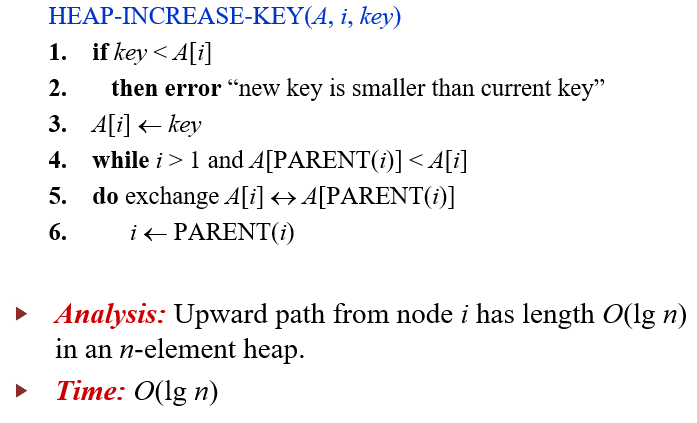
Insertion
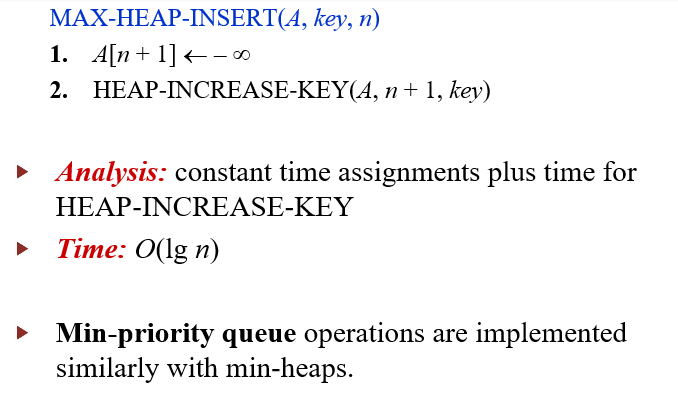
Algorithm CH6 Heap sort
https://z-hwa.github.io/webHome/[object Object]/2024/04/30/Algorithm/Algorithm-CH6-Heap-sort/